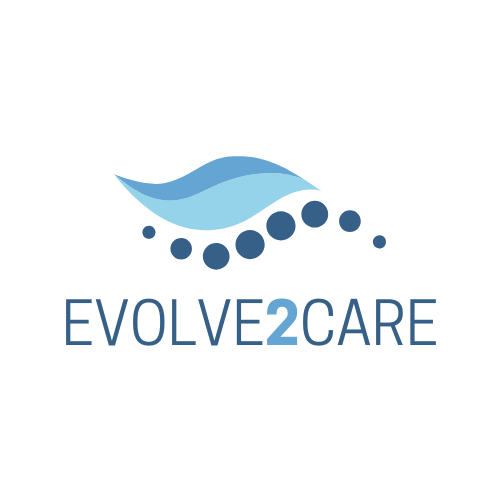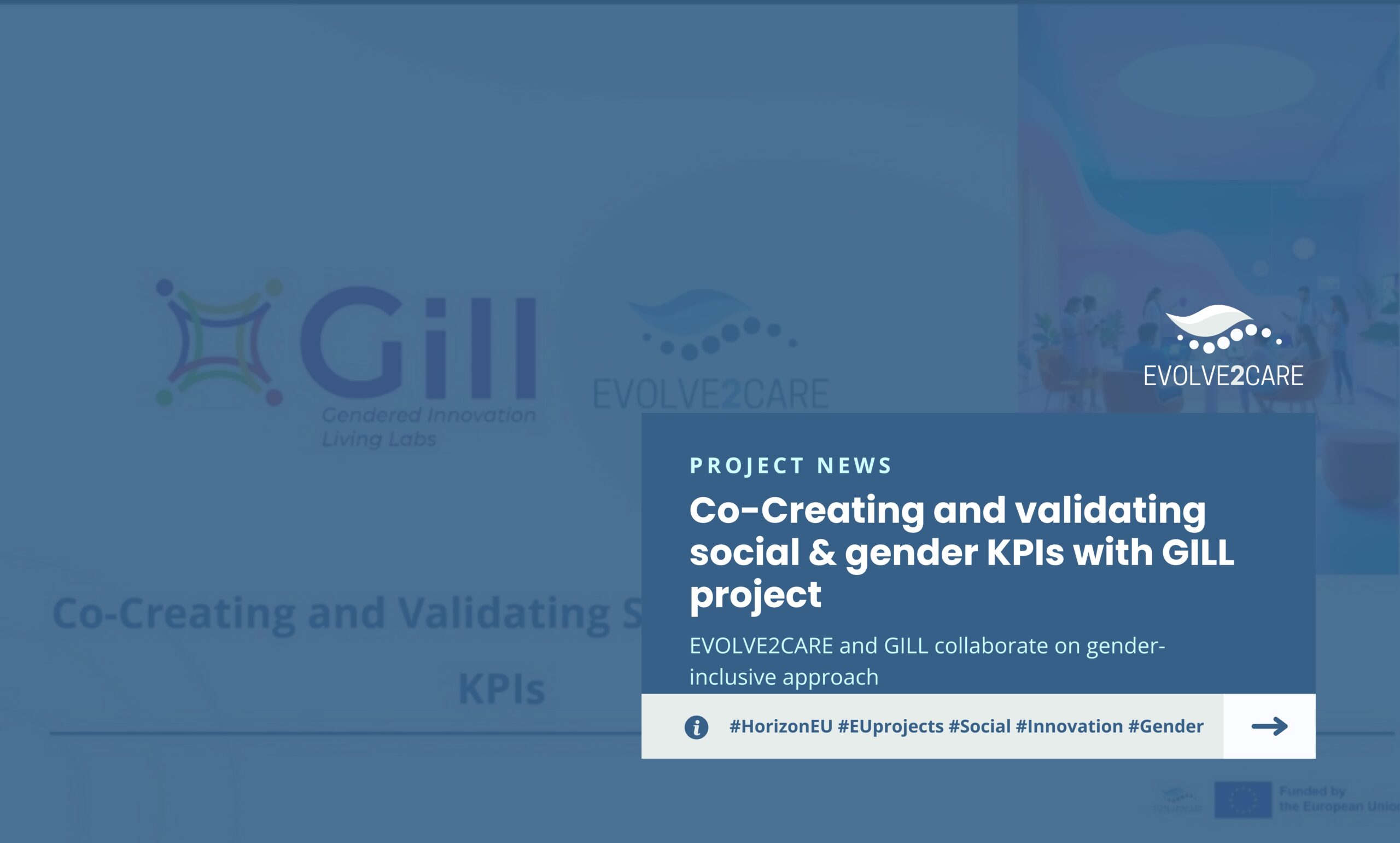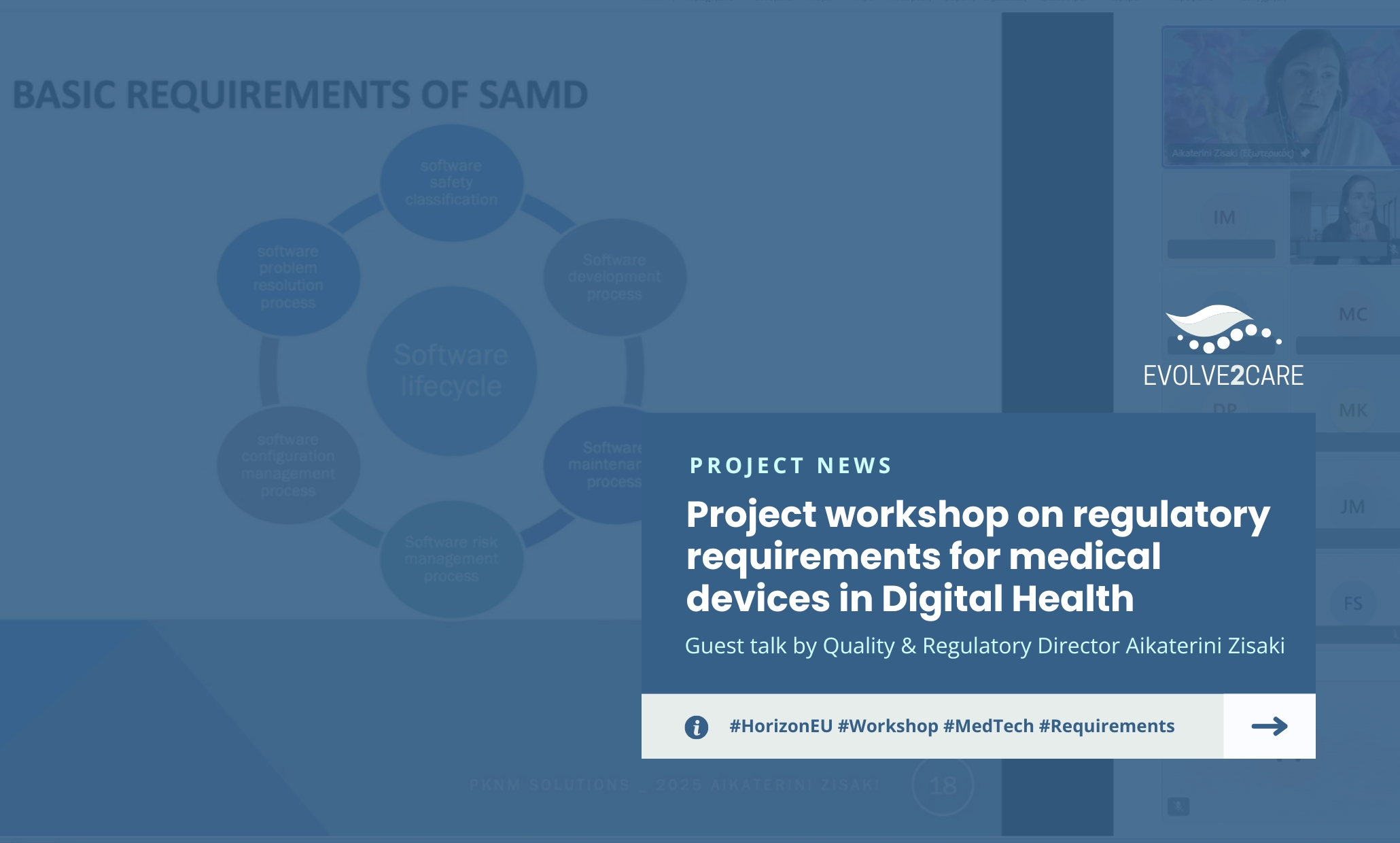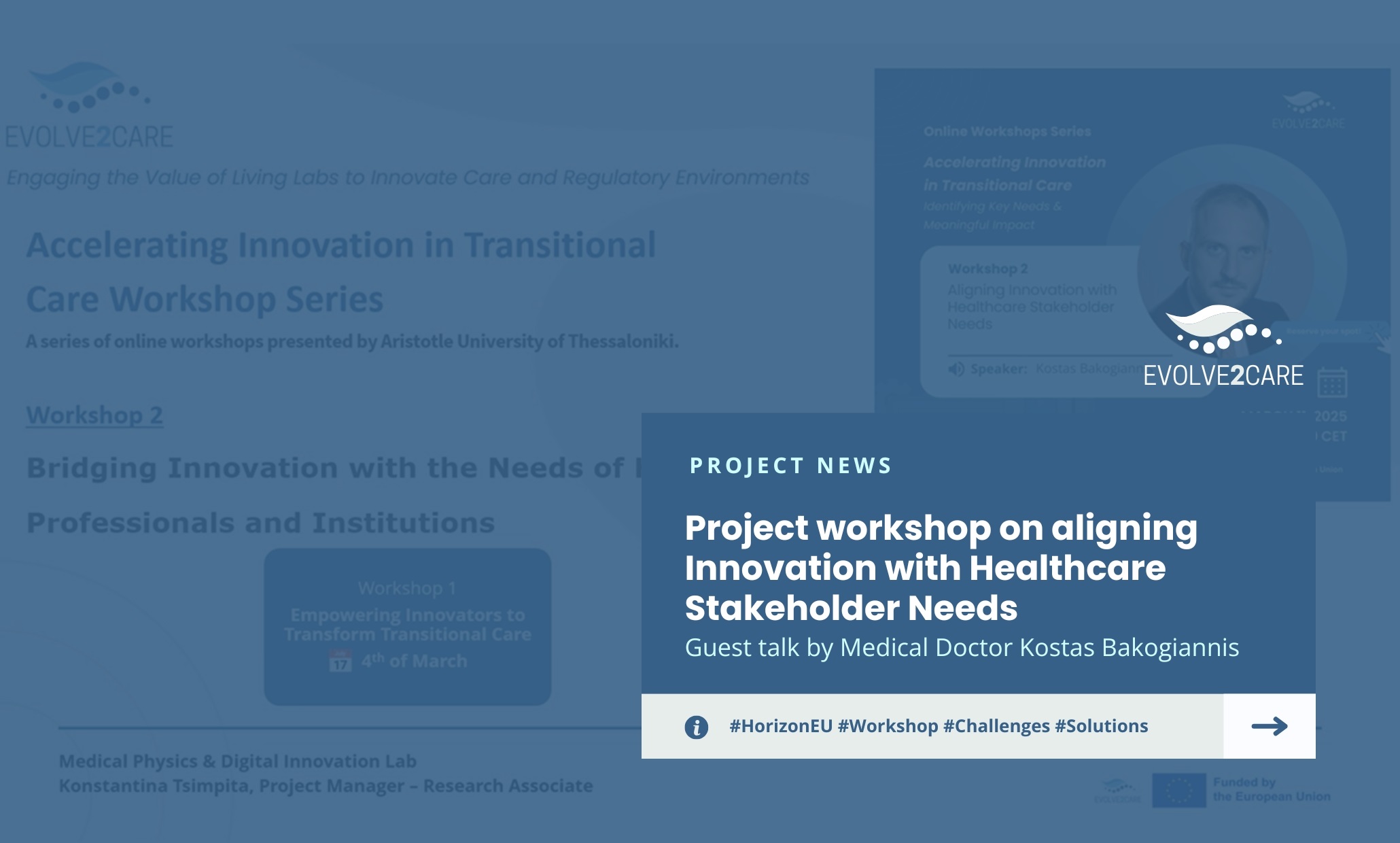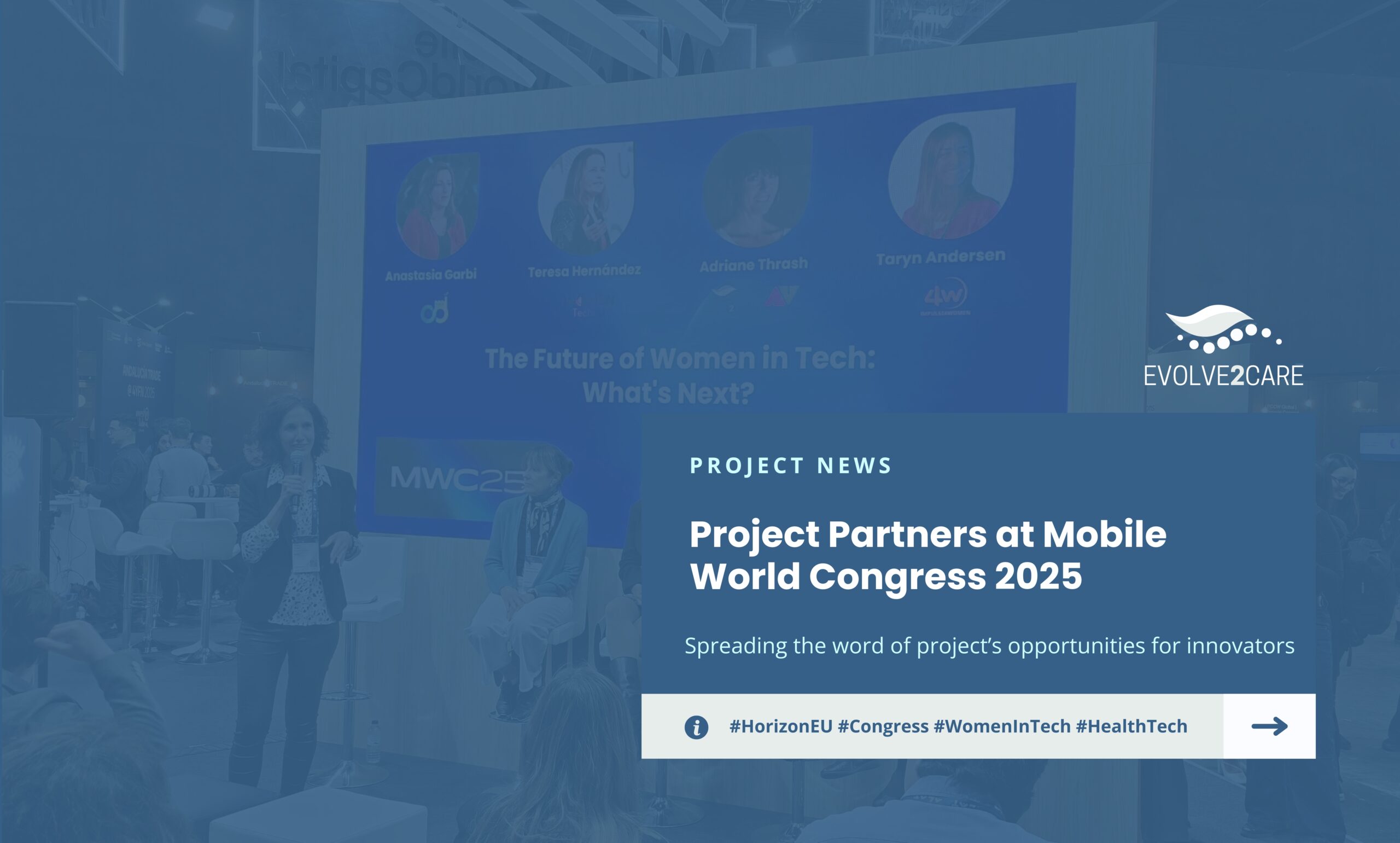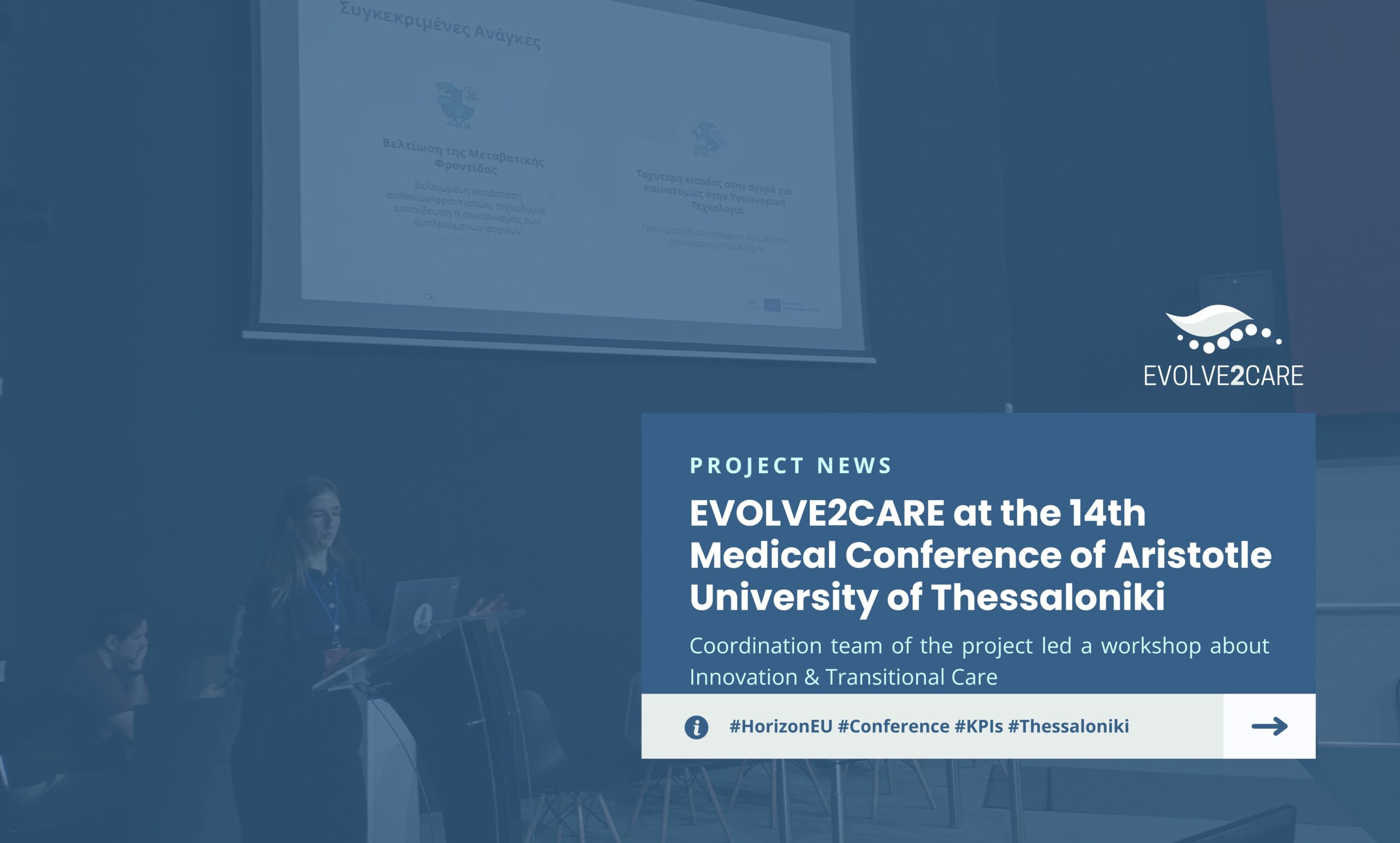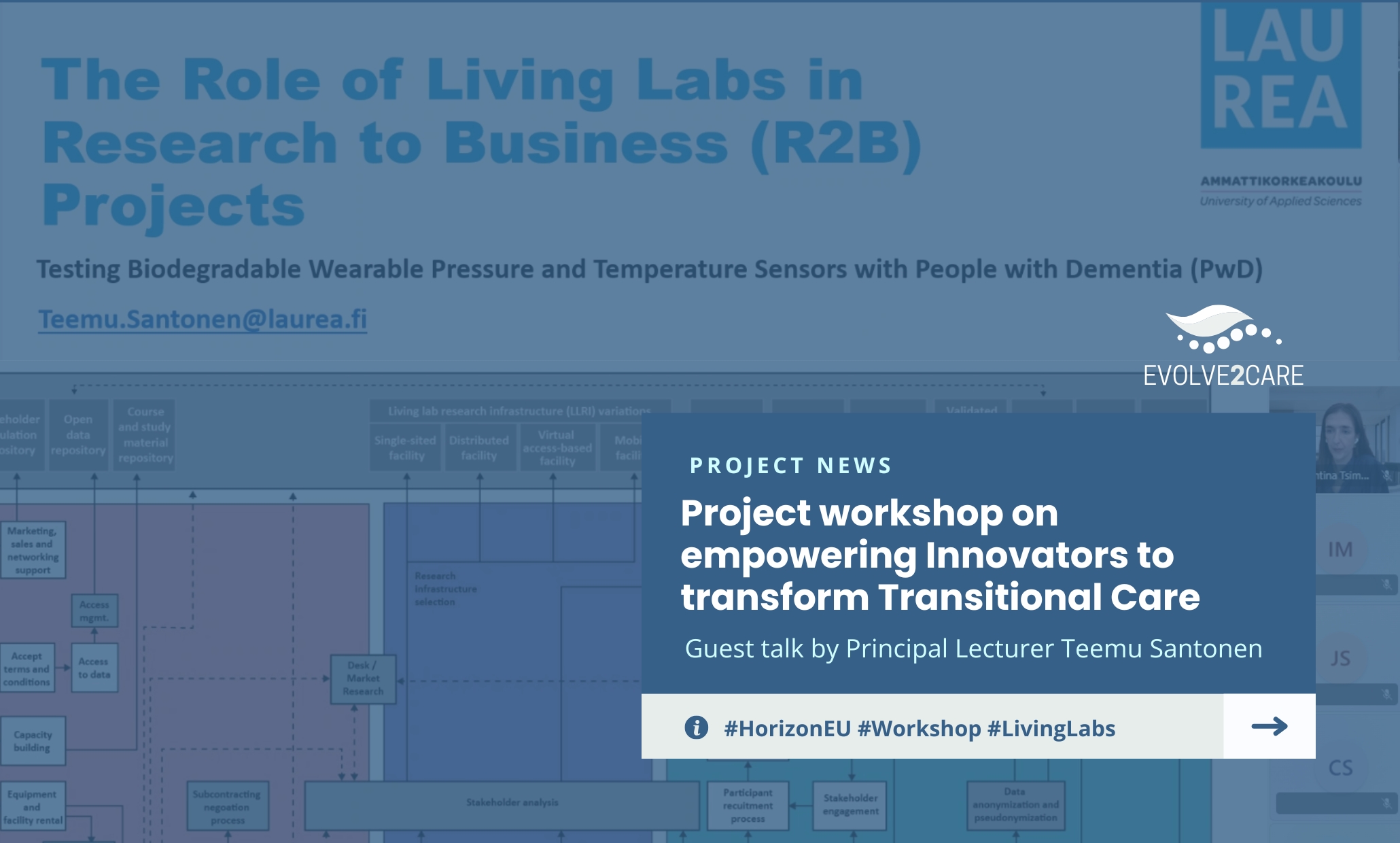As part of the Online Workshop Series to Explore Innovation in Transitional Care, the third and final session brought together healthcare professionals, researchers, and innovators to tackle one of the most challenging aspects of bringing medical innovations to market: regulatory compliance. The series, organized under the framework of the EVOLVE2CARE project (learn more here), aimed to support those working at the intersection of healthcare and technology by providing actionable insights from leading experts.
In this final workshop, Mrs. Katerina Zisaki, Quality and Regulatory Director at PKNM Solutions, delivered an in-depth presentation on the regulatory pathways for medical devices and digital health solutions in Europe. Her talk shed light on the complexities of CE certification, the Medical Device Regulation (MDR), In Vitro Diagnostic Regulation (IVDR), and the upcoming Artificial Intelligence Act (AI Act), offering practical advice for researchers and startups on how to successfully navigate these processes.
Understanding the CE Certification Process
Mrs. Zisaki emphasized the importance of CE certification, which ensures that a medical product meets general safety and performance requirements under European medical device regulations. She highlighted that beyond the 27 EU member states, several other countries—including Switzerland, Turkey, and Serbia—also recognize CE-certified products, expanding market access for compliant innovations.
A key takeaway was the broad definition of medical devices under European law. These can include:
- Instruments and implants
- Standalone software
- In vitro diagnostic tools
- Digital health solutions embedded in healthcare systems
To qualify as a medical device, the product must serve a medical purpose such as diagnosis, treatment, monitoring, or rehabilitation. She also discussed the two main regulations governing these products: the Medical Device Regulation (MDR – 2017/745) and the In Vitro Diagnostic Regulation (IVDR – 2017/746).
The Regulatory Pathway for Medical Devices
The certification process involves several critical steps:
- Defining the Intended Use: If a product falls within the legal definition of a medical device, the regulatory pathway applies automatically.
- Establishing a Quality Management System (QMS): A structured QMS (typically based on ISO 13485) is mandatory for compliance.
- Technical Documentation: Detailed records on product design, functionality, and risk assessment are required.
- Notified Body Involvement: For higher-risk devices (Class IIa, IIb, and III), an external Notified Body must evaluate compliance before the product can enter the market.
Mrs. Zisaki pointed out that the AI Act, which will be fully enforced by 2026, introduces additional requirements for artificial intelligence-driven medical devices, reinforcing the need for robust validation processes.
From Lab to Market: The Innovation Roadmap
The transition from research to market-ready innovation follows a structured process, starting with early-stage technology readiness levels (TRLs):
- TRL 4-5: Proof of concept in a laboratory setting
- TRL 6: Design verification and initial regulatory steps
- TRL 7-9: Clinical validation and certification for market access
One critical point she stressed was the importance of locking the design at the verification stage. Continuous modifications during the validation process can delay certification and increase costs, making early regulatory alignment essential.
Digital Health & Software as a Medical Device (SaMD)
Mrs. Zisaki elaborated on the growing role of digital health solutions, noting that most software-driven healthcare products now fall under Rule 11 of the MDR. If software influences medical decisions, it is classified as a medical device and requires compliance with MDR standards.
Key challenges for software-based medical devices include:
- Cybersecurity & Data Privacy: Compliance with GDPR and cybersecurity standards (ISO 27001, 27701)
- Software Lifecycle Management: Ensuring a structured software development and maintenance process
- Clinical Validation: Demonstrating that the software meets real-world medical needs
For startups and research teams developing digital health solutions, Mrs. Zisaki emphasized the importance of working with regulatory specialists early in the development phase to avoid costly compliance roadblocks.
Overcoming Regulatory Barriers: Industry Perspectives
During the Q&A session, participants raised concerns about regulatory complexity, high certification costs, and slow approval timelines. Key insights from the discussion included:
- Engaging regulatory experts early can prevent costly redesigns.
- Investors are hesitant to fund startups without a clear regulatory pathway.
- Europe’s regulatory environment differs from the U.S., with fewer fast-track approval options.
Industry expert Mr. Petros Malitas highlighted the need for more structured regulatory science education to bridge the knowledge gap between researchers and compliance experts.
Wrapping up the Workshop Series
As the final event of the Online Workshop Series to Explore Innovation in Transitional Care, this session provided participants with the tools and knowledge needed to navigate one of the most challenging aspects of healthcare innovation. Throughout the series, participants gained perspectives on fostering innovation, collaboration, and compliance across multidisciplinary teams.
Mrs. Zisaki’s keynote presentation was a powerful reminder that regulatory readiness must be part of the innovation strategy from the very beginning, not an afterthought. Success in bringing medical technologies to market depends on a clear understanding of the regulatory landscape, early planning, and collaboration between innovators, investors, and compliance experts.
The EVOLVE2CARE team thanks all participants, speakers, and contributors to this engaging workshop series and looks forward to continuing the conversation around innovation and impact in transitional care.
